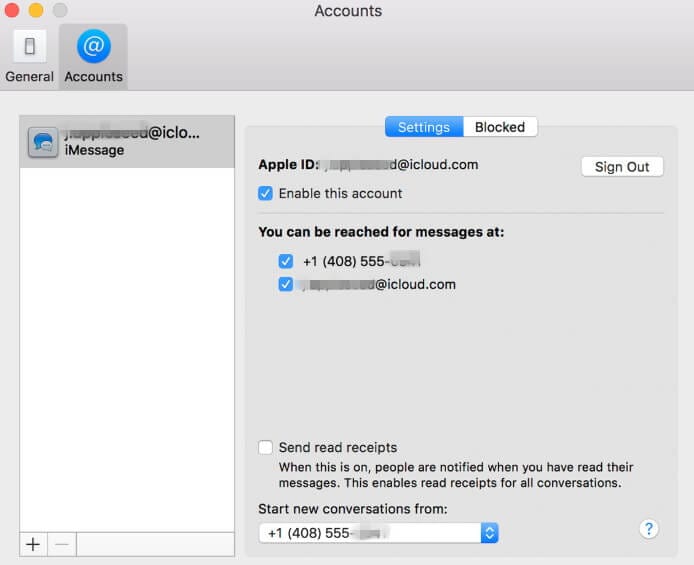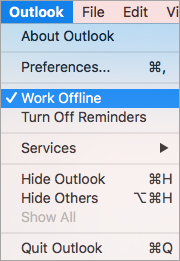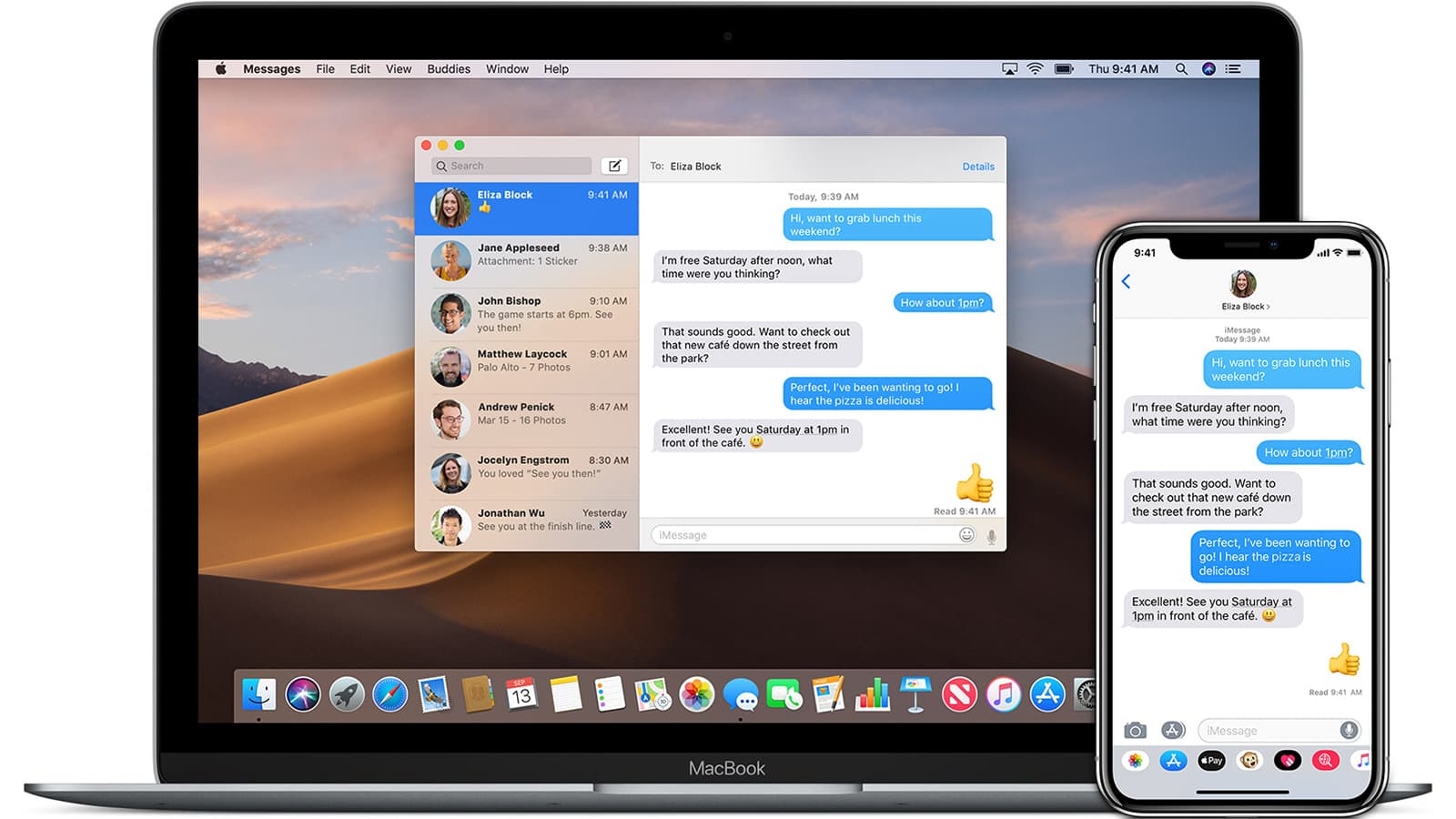Unable to Receive Text Messages from Apple® Devices If you've switched from an Apple device (e.g., iPhone®, iPad®, etc.) to a non-Apple device (e.g., Android™, BlackBerry®, etc.) and previously used iMessage®, you may experience issues receiving text and multimedia messages from Apple devices. On your Mac: Open the Message app and select Messages in the top menu bar, then choose “Preference” and click on the “Accounts” tab. Make sure the phone number and Apple ID are the same as on your iPhone. If not, click on the + icon at the bottom to add the right Apple ID. Turn Off iMessage then Back On. Check or uncheck them depending on whether you want to use them for sending and receiving messages or not. Now on your Mac, open the Messages app. Click “Messages” at the upper left corner and then choose “Preferences”. If you are referring to actual SMS text messages, make sure that you have your Continuity settings correct, to receive the SMS from the phone to the iPad. If you are referring to iMessage, make sure that it is activated on the iPad, and set to receive from the iPhone's number and your Apple ID. Using the Messages app on the Mac, you can easily send and/or receive SMS text messages (normal text messages) and iMessages (Apple’s messaging service). If you are having this issue as well (not sending or not receiving), here is how you can fix it: 1- Force quit Messages app and then reopen it.
iMessage is an instant messaging software developed by Apple. It allows you to send and receive text messages, videos, and photos. On top of that, it has another function which you will surely like. Thanks to Apple’s Continuity feature, you can now sync iMessage between iPhone and Mac, which means you can have conversations all across your iDevices. However, other users found that the iMessages sent from iPhone are not being synced onto Mac, and vice versa. This problem is due to a communication issue between iPhone and Mac. So we’ll look at some various methods to help you solve this issue. You may refer to the solutions below for detailed instructions.
How to Fix Messages Not Syncing between iPhone and Mac
Solutions to Messages Not Syncing between iPhone and Mac
If you cannot send and receive messages from either your iPhone and Mac, there must be something wrong with the communication in Apple’s Continuity feature. To solve this issue, you have to ensure that all your devices have enabled phone number and emails as ways to send and receive messages. Also, you have to make sure that all devices are using the same Apple ID. After following these steps, you should be able to solve Messages not syncing between iPhone and Mac. Here’s exactly how it is done.
- Navigate to your iPhone settings, scroll up to see “Messages” and tap on it.
- Next, tap on “Send and Receive”. From there you’ll see your Apple ID. You have to take note of it as you need to make sure that it’s the same Apple ID you are using on your Mac. You will also see all of your phone numbers along with emails which you are using for messages.
- Check or uncheck them depending on whether you want to use them for sending and receiving messages or not.
- Now on your Mac, open the Messages app. Click “Messages” at the upper left corner and then choose “Preferences”. Click on “Accounts”. From this interface, select all the emails and phone numbers you want to be associated with iMessage.
- After these steps, you may need to restart Messages. Simply go to Settings on your iPhone and then toggle iMessage to OFF. Then, toggle the switch again to turn it ON.
How to Sync Messages from iPhone to Mac
1. ApowerManager
In case iMessage not syncing between Mac and iPhone still, you may sync your messages from or to Mac using ApowerManager. It is a well-known data transfer utility, which supports various files including iMessages, text messages, contacts, music, etc. With just a few simple clicks, you will be able to sync your iMessage onto your computer using this tool. It transfers files to PC in an instant and retains the original quality of the data. Aside from that, you can use this tool to backup your device either from Mac or Windows PC. Therefore, if you lost files for some reason, you can still get them back. Now let’s see how to sync messages from your iPhone to Mac.
- Download the program on your computer and install.
- Get its mobile version from the App Store on your iPhone. Then launch the app on both devices.
- After that, use a USB cable to connect your iPhone to Mac. When a prompt appears, click on “Trust” to build connection.
- Go to “Manage” tab and select “Messages” from the sidebar menu.
- Next, select all of the messages you want to transfer and then click on the “Export” button at the top of the interface. You should see your messages on Mac after following the above steps.
2. EaseUS MobiMover
Another tool to solve issues regarding iMessage not syncing between iPhone and Mac is MobiMover by EaseUS. Similarly, it allows you to transfer data from your iOS device to Mac and Mac to iPhone. This is ideal if you want to move data like messages, contacts, notes, and calendars from your old iPhone to new one. Moreover, this comes with a user-friendly interface that even a beginner can use to sync contacts from iPhone to Mac. So read on for the step-by-step procedure on how to sync iMessage using this program.
- Download and install the desktop program on your Mac.
- Launch it and link your device to Mac using a lightning cable. A notification then will appear on your iPhone asking to trust the computer. Simply click on “Trust” to proceed.
- Once connected, select the “iDevice to Mac” option from the main interface.
- Then, choose “More” and put a check mark on Messages.
- Finally, click the “Transfer” button to begin copying messages from your iPhone to Mac. Once done, you should see the messages exported on your Mac.
Conclusion
Thanks to the Apple’s Continuity feature we are able to send and receive messages across iDevices like iPhone, iPad, and Mac. However, if you ever encountered the problem that your messages don’t appear on either your Mac or iOS device, you can try to fix it using the above-mentioned ways.
Related posts:
iMessage is Apple’s instant messaging service for devices like iPhone, iPad and even Mac. It allows users to send and receive messages, photos, videos and more between any Apple devices over a cellular data or Wi-Fi network. Besides, iMessage can be synced across iOS and Mac devices when logged into the same Apple ID. However, many Apple users complaint that their iMessages not syncing between Mac and iPhone, especially after iOS 13 update. For example:
Q: iMessage not syncing between iOS & Mac devices since installing iOS 13
“I installed iOS 13 on my iPhone 7 and iPad Pro yesterday and since then I can’t get iMessage to sync between them and my MacBook Pro. I tried turning iMessage on and off on all devices and also checked the settings to be sure that the send and receive options have been selected. The issue still exits. Any assistance would be greatly appreciated.”
Having you ever dealing with the same issue? If yes, you’ve come to the right place. iMessage not syncing on Mac is one of the most common issues faced by Apple users. In this article, we will show you 7 ways to fix the problem of iMessage on Mac not syncing with iPhone 11, iPhone 11 Pro, iPhone 11 Pro Max, iPhone XR/XS/XS Max, iPhone X/8/7/6s/6 Plus, and vice versa. All these methods mentioned below will work on any version of iOS and Mac OS, even the newest iOS 13 and macOS catalina.
- Tip 1. Check iMessage Settings
- Tip 2. Turn Off iMessage then Back On
- Tip 3. Confirm Your Phone Number with Apple ID
- Tip 4. Try to Send iMessage from Device That is Not Syncing
- Tip 5. Restart iPhone and Mac Devices
- Tip 6. Reset Network Settings on Both Devices
- Tip 7. Alternative Way to Sync iMessages between iPhone and Mac
Tip 1. Check iMessage Settings
If you’re facing the iMessage not syncing problem, the first thing you should do is checking your iMessage settings and ensure that both your iPhone and Mac sharing the same Apple ID. Sometimes, your iMessage settings may be changed after iOS 13/12 upgrade.
- On your iPhone: Go to Settings > Messages > Send & Receive, click on it and ensure that your phone number and Apple ID are set correctly and checked. If not, you can simply edit it and sign in with the right Apple ID.

- On your Mac: Open the Message app and select Messages in the top menu bar, then choose “Preference” and click on the “Accounts” tab. Make sure the phone number and Apple ID are the same as on your iPhone. If not, click on the + icon at the bottom to add the right Apple ID.
Tip 2. Turn Off iMessage then Back On
Another easy way you can try to solve the problem of iMessage not syncing between iPhone and Mac is trying to turn iMessage off and then back on again. A simple rebooting of your iMessage app can do a magic job. Here’s how to do it:
- On your iPhone: Go to Settings > Messages and turn off iMessage.
- On your Mac: Open the Message app, click on Messages > Preferences > Accounts and click on the account that you want to turn off, then uncheck the “Enable this account” option under the Apple ID.
After turning off iMessages on both your iPhone and Mac computer. Waif for several minutes and turn the iMessage back on again, then check if the iMessages sync properly across your devices. If not, you can move to the next solution.
Tip 3. Confirm Your Phone Number with Appe ID
If you’ve tried the above two steps but the iMessage is still not syncing properly, you should confirm that the proper phone number is tied to the Apple ID in use. Follow the instructions below to confirm your Apple ID phone number:
- Navigate to the Apple official website and login in with your Apple ID and password.
- Go to Account and you will see all your personal details. From here, make sure that you have the correct phone number and email address.
For most people, this will solve the iMessage on Mac not syncing with iPhone problem. If not, don’t worry, we sill have a bunch of tricks left that you can surely give a try.
Tip 4. Try to Send iMessage from Device That is Not Syncing
If you are still facing the iMessage on Mac not syncing with iPhone problem, your device might be lagging. The easy solution over here is to simply send an iMessage from the device that is not able to sync. Just open the iMessage app and send any kind of text to any person.

Not Receiving Sms On Mac
This might look simple and easy but works for some Apple users. Sometimes, your device may be falling to receive iMessages on time and sending a message using it will surely make it sync again. This especially applies if you have an outdated version or you are not using the latest iOS version in your iPhone devices.
Tip 5. Restart iPhone and Mac Devices
Just like turning off iMessage and then turning it back on, you can also try restarting both your Mac and iPhone devices. In some cases, simply restarting your devices can help to refresh the iMessage app and get your iMessage syncing correctly again. Follow the steps below:

- How to restart iPhone: Press and hold the Top or Side button until the poser off slider appears, then drag the slider to turn your iPhone off. After that, press and hold the Top or Side button again until the Apple logo appears.
- How to restart Mac: Click on the Apple key and then choose Restart, or you can press Control + Command + Eject keys together.
Tip 6. Reset Network Settings on Both Devices
Not Receiving Texts On Macbook Air
The biggest culprit here is the network. If your iMessage not syncing between Mac and iPhone, you should check your network settings and Wi-Fi connections to ensure your devices connected to a stable network. Also, you can try resetting the network settings on both devices to fix the problem.
- Reset network settings on iPhone: Go to Settings > General > Reset > Reset Network Settings, then enter your passcode and wait for the process to complete.
- Reset network settings on Mac: Unlike iPhone, resetting the network settings in macOS requires a bit more effort. And this will delete certain system configuration files, so you’d better back up your Mac computer before resetting.
- Back up your Mac device and close down any apps that use the network on it.
- Click on the Wi-Fi icon in the top menu bar and select “Turn Wi-Fi” off.
- Locate the Finder and click on it, then press Command + Shift + G keys together to open the Go to Folder window.
- Type /Library/Preferences/SystemConfiguration/ into the blank and click Go, you will see a list of Configuration files.
- Select all the network-related files from that list. Once selected, drag them to another location like your desktop.
- Finally, click the Apple menu and select Restart. Your Mac computer will restart and your network settings will have been cleared.
Tip 7. Alternative Way to Sync iMessages between iPhone and Mac
After trying all the above-given tips, if you are still not able to solve the iMessage on Mac not syncing with iPhone error, you can try an alternative way to sync iMessages between Mac and iPhone. Here we recommend Fucosoft iOS Data Backup & Restore – using which you can transfer and export all un-synced iMessages from iPhone to Mac in PDF, Text or HTML format. Plus, you are able to export text messages, contacts, call history, WhatsApp & WeChat chats, photos, videos, notes and much more data from iPhone or iPad.
How to Transfer & Export iMessages from iPhone to Mac:
To transfer and export iMessages from your iPhone to Mac, just free download Fucosoft iOS Data Backup & Restore program on your computer, then follow the steps listed below:
Messages On Mac Not Updating
Step 1: Launch the program on your Mac and connect your iPhone to the computer using USB cable. Then from the main interface, choose “Export Data from Device & Backup” and click on “Export From Device”.
Step 2: Choose Messages and any other types of data that you’d like to export from the list, then click on the “Scan” button and let the program to begin scanning your iPhone for iMessages and other selected files.
Step 3: When the scanning is finished, you are able to preview all the iMessages and other available data in details. Then choose the conversations and items you wish to export to Mac and click on “Export”.
After that, you should find that your iMessages are now in both your iPhone and Mac. Also, you can try another alternate solution: dr.fone – Transfer (iOS) to easily transfer iMessages and other data from your iPhone to your Mac. Besides exporting data from iPhone to computer, this tool also lets you transfer music, photos, videos, contacts, messages, etc. From one iPhone to another. And it is works perfectly with the latest iOS 13 and iPhone 11/11 Pro/11 Pro Max, iPhone XS/XS Max/XR.
You May Also Like:
 Please enable JavaScript to view the comments powered by Disqus.
Please enable JavaScript to view the comments powered by Disqus.iPhone Data Recovery
- Recover Deleted or Lost Data from iDevices, iTunes or iCloud Backup.
Not Receiving I Messages On Mac
Hot Articles
